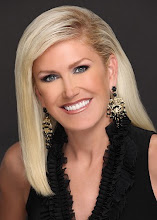
According to the Skin Cancer Foundation, sunglasses may save their skin and eyes later in life by blocking the sun's powerful ultraviolet rays (UVR).

Children under age 10 are at a high risk for skin and eye damage from UVR. The skin on their eyelids and around their eyes is more delicate and vulnerable than adult skin. "And until about age 10, the lens of a child's eye is clear, allowing greater solar penetration and thus greater UVR-induced ocular changes," explains Adelaide A. Hebert, MD, professor and vice chair of Dermatology, University of Texas, Houston. "After that, the lens starts to become more opaque, providing better protection."

UVR exposure causes 90 percent of all skin cancers. In addition, retinal exposure to UVR is associated with cataracts and macular degeneration, both causes of vision impairment. UVR damage builds over time, so the sooner you start protecting your children's eyes from the sun, the lower their risk will be of ever developing future eye problems.

Fortunately, good sunglasses protect both the skin around the eye and the eye itself. While children under 6 months old should never be exposed to the sun, once they reach 6 months, they should wear sunglasses outside. If they require prescription glasses, they should also wear prescription sunglasses.Keep these rules in mind when buying sunglasses for children:

- Find glasses that block 99-100 percent of both UVA and UVB rays. Buy ones that indicate the percentage of UVR protection they provide. The more skin covered, the better, so look for large, wraparound styles.
- Use playground-proof lenses. Kids run, trip, fall, and bounce off objects at alarming speed. Their sunglasses should match this active lifestyle. Find impact-resistant, scratch-proof lenses that don't pop out of the frames. Avoid glass lenses, unless recommended by a doctor; plastic is safer. Frames should be bendable but unbreakable. Make sure the glasses fit snugly, close to the face.
- Let them choose. You're not the one who has to wear the glasses or hear other kids' comments on them. Children – especially older kids and teens – are likelier to actually wear them if they select them themselves.
- Eyeball the glasses. Check to see that lenses are not scratched or warped and have no other flaws that distort vision. Very young children may not know to complain if the glasses are flawed, so it's up to you to check before buying.
- Double Up. Sunglasses block only rays that come directly through the lenses. The skin around the eyes remains vulnerable to rays entering though the sides or from the top, or reflected upwards off snow, sand, water, etc. Wearing a wide-brimmed hat is a good backup, blocking out many rays from above and even from the sides, while also shielding the face and neck.

"We need to teach children early the importance of wearing sunglasses – just as we teach them to brush their teeth and wear a seat belt, so that they develop good habits that last for life," concludes Dr. Hebert. - Source: Skin Cancer Foundation 2010
 "Wearing Sunglasses is COOL for KIDS this Summer!", says Jenifer Kuykendall, Mrs. Rockport-Fulton International. She tells everyone she meets to "Cherish their Skin" AND now, their eyes, too!
"Wearing Sunglasses is COOL for KIDS this Summer!", says Jenifer Kuykendall, Mrs. Rockport-Fulton International. She tells everyone she meets to "Cherish their Skin" AND now, their eyes, too! According to the Skin Cancer Foundation, sunglasses may save their skin and eyes later in life by blocking the sun's powerful ultraviolet rays (UVR).
According to the Skin Cancer Foundation, sunglasses may save their skin and eyes later in life by blocking the sun's powerful ultraviolet rays (UVR).  Children under age 10 are at a high risk for skin and eye damage from UVR. The skin on their eyelids and around their eyes is more delicate and vulnerable than adult skin. "And until about age 10, the lens of a child's eye is clear, allowing greater solar penetration and thus greater UVR-induced ocular changes," explains Adelaide A. Hebert, MD, professor and vice chair of Dermatology, University of Texas, Houston. "After that, the lens starts to become more opaque, providing better protection."
Children under age 10 are at a high risk for skin and eye damage from UVR. The skin on their eyelids and around their eyes is more delicate and vulnerable than adult skin. "And until about age 10, the lens of a child's eye is clear, allowing greater solar penetration and thus greater UVR-induced ocular changes," explains Adelaide A. Hebert, MD, professor and vice chair of Dermatology, University of Texas, Houston. "After that, the lens starts to become more opaque, providing better protection." UVR exposure causes 90 percent of all skin cancers. In addition, retinal exposure to UVR is associated with cataracts and macular degeneration, both causes of vision impairment. UVR damage builds over time, so the sooner you start protecting your children's eyes from the sun, the lower their risk will be of ever developing future eye problems.
UVR exposure causes 90 percent of all skin cancers. In addition, retinal exposure to UVR is associated with cataracts and macular degeneration, both causes of vision impairment. UVR damage builds over time, so the sooner you start protecting your children's eyes from the sun, the lower their risk will be of ever developing future eye problems. Fortunately, good sunglasses protect both the skin around the eye and the eye itself. While children under 6 months old should never be exposed to the sun, once they reach 6 months, they should wear sunglasses outside. If they require prescription glasses, they should also wear prescription sunglasses.Keep these rules in mind when buying sunglasses for children:
Fortunately, good sunglasses protect both the skin around the eye and the eye itself. While children under 6 months old should never be exposed to the sun, once they reach 6 months, they should wear sunglasses outside. If they require prescription glasses, they should also wear prescription sunglasses.Keep these rules in mind when buying sunglasses for children:


.jpg)


